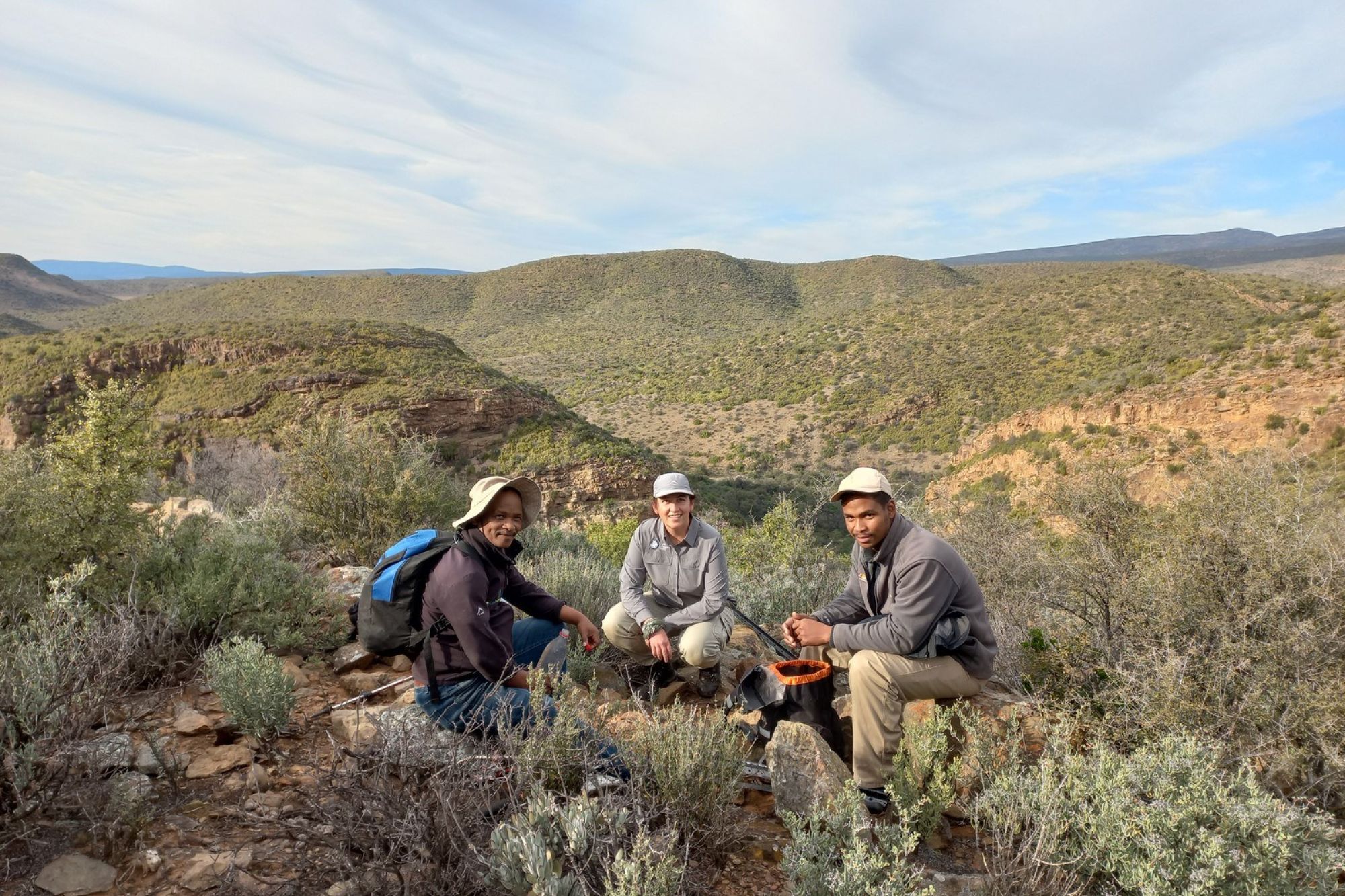
Leopards in the Little Karoo
CapeNature staff in the CapeNature Protected Area Complexes of Outeniqua, Gamkaberg and Swartberg have recently been working on a rewarding collaborative project aimed at updating our knowledge of leopard population density and compiling leopard identikits.
The leopard, Panthera pardus, has a red list status of vulnerability. Although leopards are widespread in South Africa, their survival is far lower outside than inside protected areas. The main threat to these apex predators is unsustainable persecution: trophy hunting, control of damage-causing animals, snaring and hunting for skins for cultural regalia.
In the Little Karoo, leopards are known to prey on at least 33 different species but the most common items on the menu are duiker, grey rhebok, dassies, klipspringer and baboon. They have large home ranges and can come into conflict with agriculture in this semi-arid environment, where crop farming is likely to be increasingly replaced by livestock and game farming.
Previous camera trapping research by the Cape Leopard Trust (CLT) and the Panthera organization showed that leopards occur at a relatively low density in the Little Karoo. Earlier this year, the CLT began a re-survey aimed at updating the leopard population density estimate for the region and detecting changes over time. In the veld and during a workshop, the CLT field team shared valuable information on camera trap deployment and servicing with CapeNature staff. During the first six weeks of the survey, with the help of CapeNature reserve personnel, CLT set up 64 paired camera stations across an area of about 2000km2. Each leopard has a unique spot pattern. By setting two traps opposite each other at each station, photos of left and right sides of individuals can be obtained and a leopard identikit can be compiled and used to estimate the number of individuals in an area. The 64 stations included 29 stations in the Outeniqua, Gamkaberg and Swartberg Protected Area Complexes. The CLT cameras photographed leopard at nine of 12 stations on Swartberg and at 12 of 15 stations on Gamkaberg. Although no leopards were recorded at the two Ruitersbos (Outeniqua) CLT stations, theses predators have previously been detected by reserve staff. Other highlights included Cape grysbok, aardwolf, and honey badger.
The success of the ongoing survey will also be due to the participation of 26 private landowners, who allowed CLT and CapeNature to set up an additional 35 stations on their properties. By tracking changes in the Little Karoo leopard population over time, threats to these top predators will be identified so that the necessary conservation interventions can be implemented. This includes the promotion of holistic farm management methods to protect biodiversity.
A leopard taken by camera trap at Rooiberg
An aardwolf taken by camera trap at Gamkaskloof

Three researchers working together in the Karoo: Cornelius Julies (CapeNature Senior Field Ranger, Gamkaberg), Anita Wilkinson (Senior Researcher, Cape Leopard Trust) and Charlton Abrahams (CapeNature Conservation Assistant, Gamkaberg).



